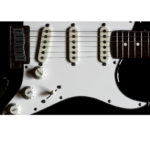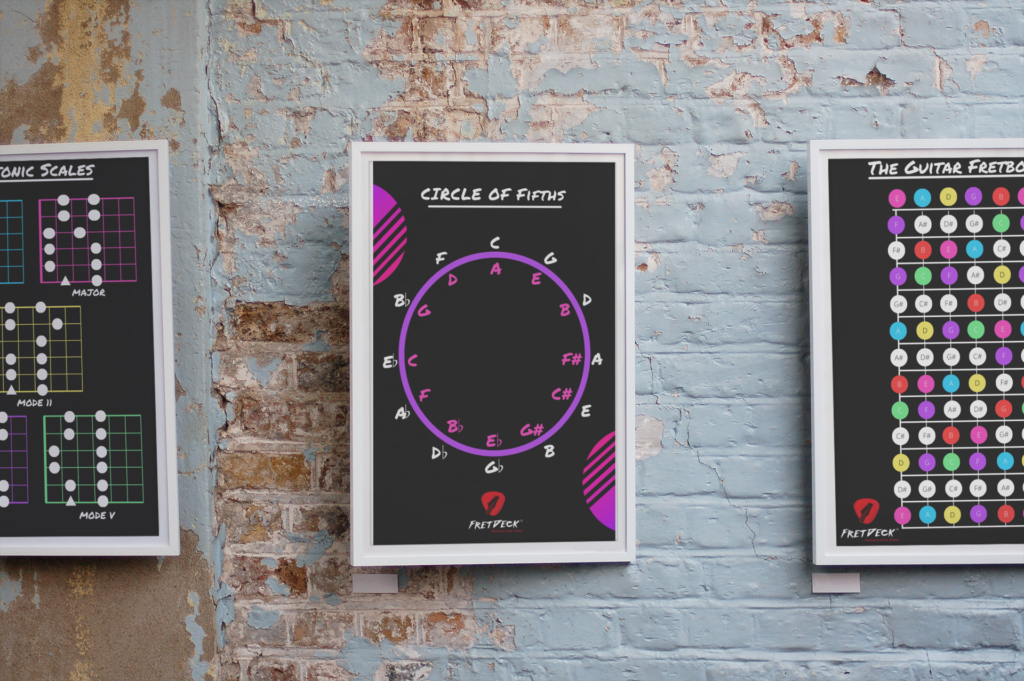When it comes to music theory guitar, one of the most powerful tools at your disposal is the secondary dominant chord. These chords add tension, movement, and a sense of surprise to your chord progressions, making your music more dynamic and engaging. Whether you’re a beginner experimenting with songwriting or an advanced player looking to add sophistication to your playing, secondary dominants can elevate your music to the next level.
In this guide, we’ll explain what secondary dominants are, why they work, and how to apply them in your playing. We’ll break down the music theory behind them, provide practical guitar examples, and share tips for using them in various genres. By the end, you’ll have the tools to enhance your chord progressions and make your music truly stand out.
Don’t forget—join our Guitar Freaks Hangout on Discord for exclusive discussions, tips, and resources to take your playing even further. You’ll also get access to my free eBook, Fret Logic, packed with actionable strategies to level up your guitar skills.
What Are Secondary Dominants in Music Theory?
To understand secondary dominants, we first need to revisit the concept of a dominant chord. In music theory for guitar, a dominant chord is typically the V chord in a key, and it has a natural tendency to resolve to the I chord (the tonic). For example, in the key of C major:
- The V chord is G7, which resolves to the tonic, C.
A secondary dominant is a chord that temporarily tonicizes (or emphasizes) a chord other than the tonic. Essentially, it acts as the V chord of a chord that isn’t the tonic. For example, you can use E7 to tonicize Am (the vi chord in the key of C major).
Here’s a quick example in the key of C major:
- Progression without secondary dominant: C → Am → Dm → G → C
- Progression with secondary dominant: C → E7 → Am → Dm → G → C
Notice how the E7 adds tension and interest before resolving to Am. This is the power of secondary dominants—they pull the listener toward the next chord, creating a sense of movement and surprise.

Join Guitar Freaks Hangout on Discord! 🎸
Get Fret Logic FREE!
Join the Guitar Freaks Hangout Discord and get exclusive access to my entire e-book, Fret Logic! Master the fretboard and elevate your solos with this comprehensive guide.
👉 Don’t miss out—join now and download your free copy!
Formula for Secondary Dominants
Using secondary dominants is simple once you understand the formula:
- Identify the chord you want to tonicize (the target chord).
- Find the V chord of that target chord.
- Add the V chord (secondary dominant) before the target chord.
For example:
- To tonicize Am (the vi chord in C major), use E7 (the V of Am).
- To tonicize Dm (the ii chord in C major), use A7 (the V of Dm).
By inserting these secondary dominants, you create harmonic tension that resolves satisfyingly to the target chord.
Why Are Secondary Dominants So Effective?
Secondary dominants work because they introduce tension and resolution, two core principles of Western harmony. In music theory for guitar, dominant chords are rich in dissonance, particularly the tritone interval (between the 3rd and 7th of the chord). This dissonance creates a pull toward resolution, making the music feel dynamic and engaging.
By adding secondary dominants, you’re essentially creating mini “tension-resolution” moments within your chord progressions. This adds depth, movement, and an emotional impact that can transform even simple progressions into something special.
How to Use Secondary Dominants on Guitar
Now that you understand the theory, let’s put it into practice. Here are some examples of how to incorporate secondary dominants into your playing.
1. Basic Progression with a Secondary Dominant
- Progression: C → A7 → Dm → G7 → C
In this example, A7 (the V of Dm) is added before Dm, creating a smooth and interesting transition.
Guitar Tip:
Play A7 as an open chord or a barre chord at the 5th fret. Experiment with emphasizing the 7th (G) to bring out the dominant quality.
2. Minor Progression with a Secondary Dominant
- Progression: C → E7 → Am → D7 → G7 → C
Here, E7 (the V of Am) is used to tonicize Am, while D7 (the V of G) adds another layer of tension before resolving to G7.
Guitar Tip:
Try playing E7 with a Hendrix-style shape (adding the #9) to emphasize tension before resolving to Am.
3. Blues Progression with Secondary Dominants
- Progression: C7 → F7 → C7 → G7 → D7 → G7 → C7
In this 12-bar blues progression, D7 is used as a secondary dominant to lead into G7, creating a smoother transition back to C7.
Guitar Tip:
Experiment with sliding into the D7 chord shape to create a bluesy feel.

Join Guitar Freaks Hangout on Discord! 🎸
Get Fret Logic FREE!
Join the Guitar Freaks Hangout Discord and get exclusive access to my entire e-book, Fret Logic! Master the fretboard and elevate your solos with this comprehensive guide.
👉 Don’t miss out—join now and download your free copy!
Advanced Applications of Secondary Dominants
Once you’re comfortable with the basics, here are some advanced ways to use secondary dominants.
1. Extended Dominant Chains
You can chain multiple secondary dominants together for a cascading effect.
- Progression: C → E7 → A7 → D7 → G7 → C
Each dominant chord leads to the next, creating a sense of continuous motion.
2. Altered Secondary Dominants
Add alterations (e.g., b9, #9, b13) to your secondary dominants for extra tension.
- Example: Replace E7 with E7#9 in the progression C → E7#9 → Am.
Guitar Tip:
Play E7#9 as a barre chord with the #9 (G#) on the high E string for a dramatic, Hendrix-style sound.
3. Using Secondary Dominants in Modal Progressions
Secondary dominants aren’t just for major and minor keys—they work beautifully in modal contexts too.
- Example in Dorian Mode: Dm → A7 → G → F → G → Dm
Here, A7 tonicizes G (the IV chord in D Dorian), adding a unique twist to the modal flavor.
Join the Guitar Freaks Hangout for More Tips and Resources!
Mastering secondary dominants is just one step on your journey to becoming a better guitarist. If you’re excited to learn more, join the Guitar Freaks Hangout on Discord!
Here’s why you’ll love it:
- Exclusive Resources: Download my free eBook, Fret Logic, for practical tips on improving your playing.
- Community Support: Connect with other guitarists, ask questions, and share your progress.
- Live Discussions: Participate in Q&A sessions and jam challenges to stay motivated.
🎸 Click here to join the Guitar Freaks Hangout now!
Final Thoughts
Using secondary dominants is one of the most effective ways to make your music more engaging and dynamic. They bring a sense of tension and resolution, adding depth to your chord progressions.
Whether you’re writing songs, improvising, or arranging covers, secondary dominants are a versatile tool that can elevate your playing. Start by experimenting with the examples in this guide, and don’t be afraid to push the boundaries with altered chords and advanced techniques.
For more tips and tricks on music theory guitar, join the Guitar Freaks Hangout on Discord. Share your progress, get feedback, and connect with fellow guitarists exploring the art of harmony and chord progressions.
What’s your favorite way to use secondary dominants? Let me know in the comments!
To deepen your understanding of dominant chords and their applications, you might find our article on Guitar Chords A7: Magic of Dominant 7th Chords particularly insightful. This piece delves into the structure and usage of dominant 7th chords, providing practical examples to enhance your playing.

Join Guitar Freaks Hangout on Discord! 🎸
Get Fret Logic FREE!
Join the Guitar Freaks Hangout Discord and get exclusive access to my entire e-book, Fret Logic! Master the fretboard and elevate your solos with this comprehensive guide.
👉 Don’t miss out—join now and download your free copy!










